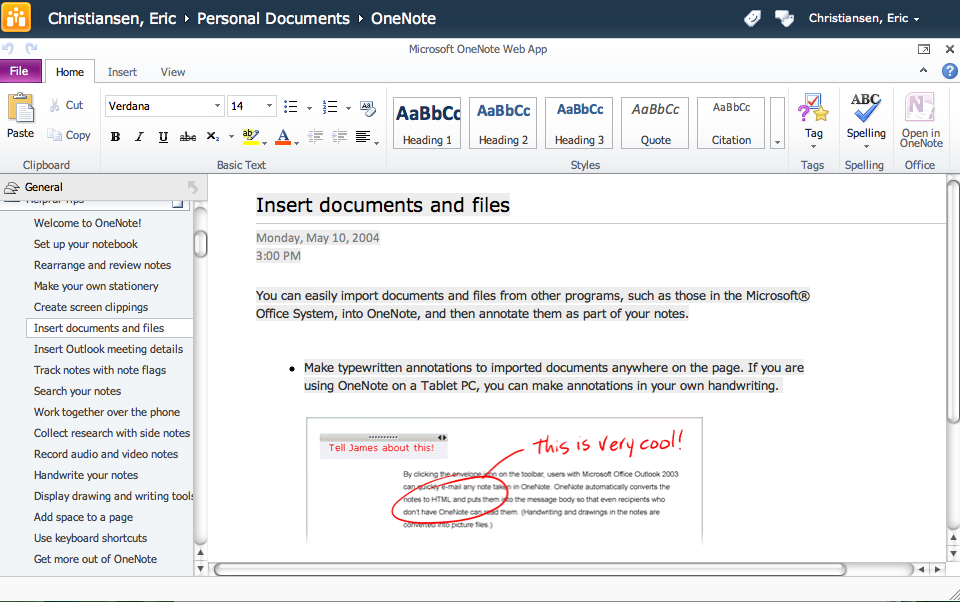Recently, I decided to purchase the new MacBook Air. Until this year, I was a long time PC user, so Apple products are still relatively new to me. I wanted something that I could do more work on than the iPad but still be small and light. I wanted something I could use on the train as well as use in meetings while in the office. I originally purchased the iPad as a personal device for casual email and web browsing at home. It works fantastic for that, but when I tried to use it at work to take notes or draft lengthy emails, I found the on-screen keyboard of the iPad lacking. This is why I decided to purchase the MacBook Air.
I got the new 11.6″ MacBook Air with 1.4 GHz processor and 4GB of RAM with a 64 GB SSD drive. This thing is tiny. Its about the same width as the iPad, super thin and only weighs about a pound more than the iPad at 2.3 lbs. My primary work machine, a Dell Latitude E6410, seems like a boat anchor in comparison. I was concerned about the slower 1.4 GHz Core2 Duo processor, but it seems to be holding up quite well. However, I won’t be running any Windows 7 virtual machines with this, especially with only having 64GB of storage. The only part where I notice slight lagging is in Outlook 2011. Every now and then, my typing will lag for a second, but then is fine. I never noticed any performance issues with the built in applications, even when I had my entire mailbox downloaded with the built in mail app. I have 25,000 items in my Inbox, so that probably doesn’t help.
I installed Office 2011 Business edition. This includes Word, PowerPoint, Excel and Outlook. Outlook was missing in the older versions of office, but is now back. It looks very much like Office 2010 for Windows complete with ribbon bars. It connects to Exchange via RPC the same as Outlook for Windows and doesn’t rely on WebDAV that Entourage used. You get the same full functionality as the Windows version as far as I can tell.
That said, I think there are some limitations. I haven’t really used Excel, PowerPoint or Word yet (other than to draft this blog post), but at first glance, they look and operate the same as the Windows versions. I also got hold of a copy of the Office Communicator 2011 client for Mac. This works just like the Windows version and connects directly to the OCS servers. It doesn’t need to proxy through a Communicator Web Access server like the Blackberry or iPhone clients.

I am a big user of OneNote for taking notes in meetings so not having an OS X version of OneNote was very disappointing to me. However, a colleague of mine told me about Microsoft’s OneNote Web App. By storing my OneNote files on our company’s SharePoint server, I can work in my OneNote files via Web browser using the Web App version of OneNote. I can also use standard OneNote 2010 while at my desk to work in the files stored on our SharePoint server. There’s no need to store two different sets of files. There are some limitations of the Web App version of OneNote, but for basic note taking, it works great. The only caveat is that you must have an Internet connection to access the application and data.

For applications that don’t have a native OS X version, I’m using Web versions of the application or Citrix published applications. Many legal applications, such as Document Management Systems, do not have Mac versions of their applications. Again, I’m not replacing my primary laptop with the MacBook, so this is not a deal breaker for me. The full Citrix Client for Mac is very nice and a user can create application shortcuts to individual applications easily themselves through the “Dazzle” interface.
As much as I love Apple hardware and software, I still don’t think going native OS X on a Mac is ready for prime time at our law firm clients. By native OS X, I’m referring to running only the OS X operating system and not running a Windows operating system via virtualization or by running the full Windows OS instead of OS X. However, Office 2011 is a big step in the right direction. Its much better than the built in Mail program that comes with the Mac. For someone looking to use an iPad in the work place, they should look at the MacBook Air as an option. The only downside is having to support Apple equipment. iPads and iPhones are one thing, supporting OS X is a whole other animal as it’s a full operating system that needs to be managed and secured just like a Windows machine.
Overall, I find the MacBook Air is a great secondary machine and compliments my work Windows laptop and home iMac very well. I love the MacBook Air hardware. It’s so small and light and plenty fast for my needs. I see myself using this much more than the iPad.